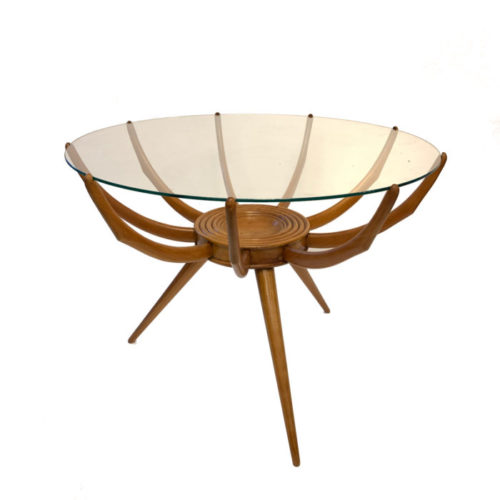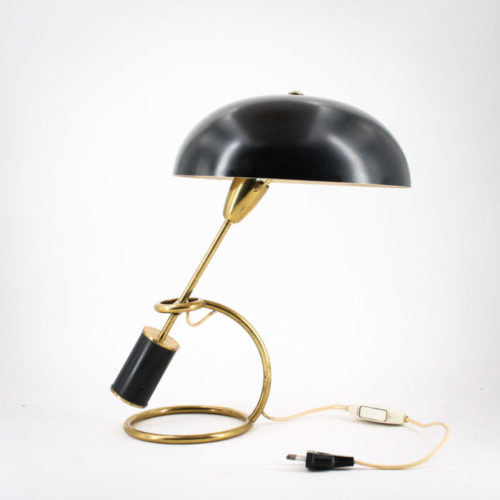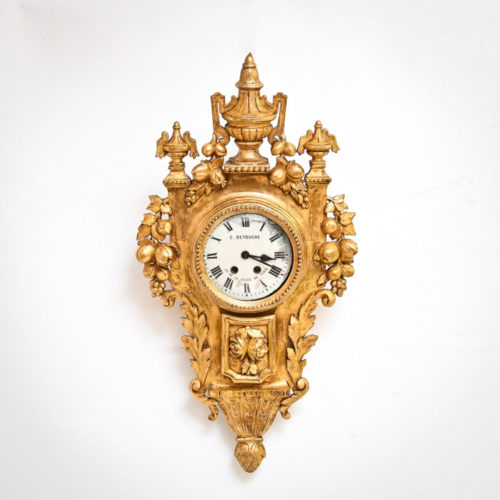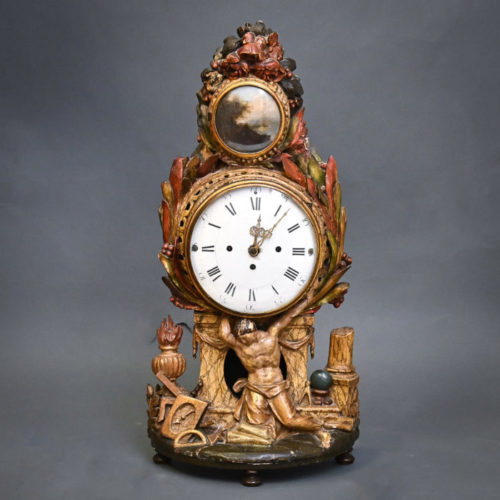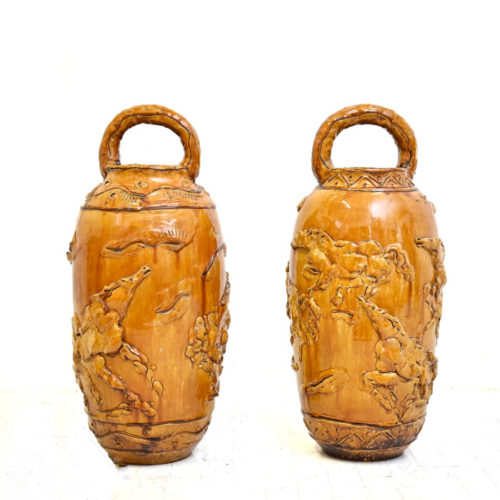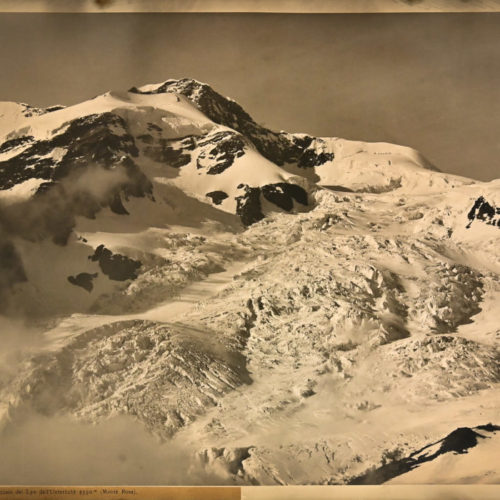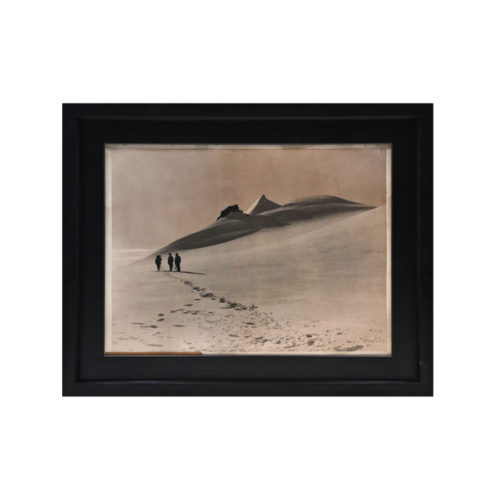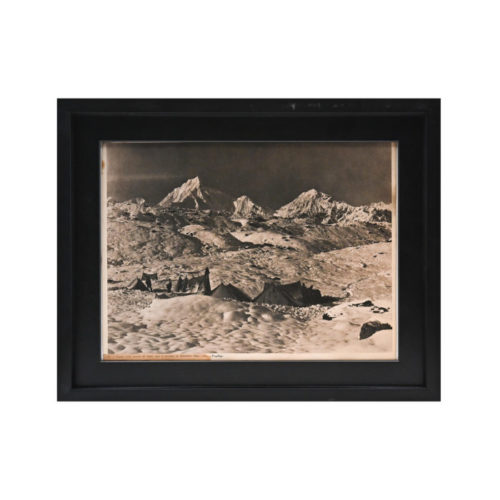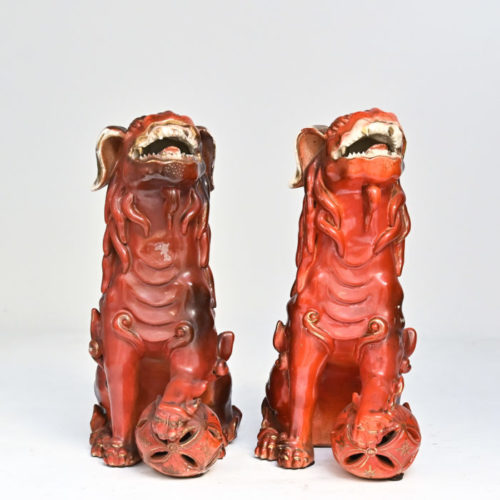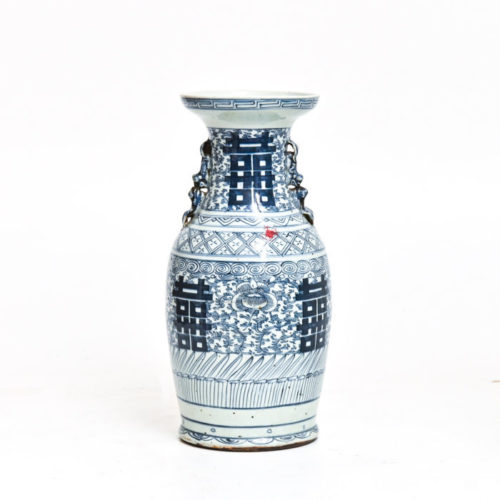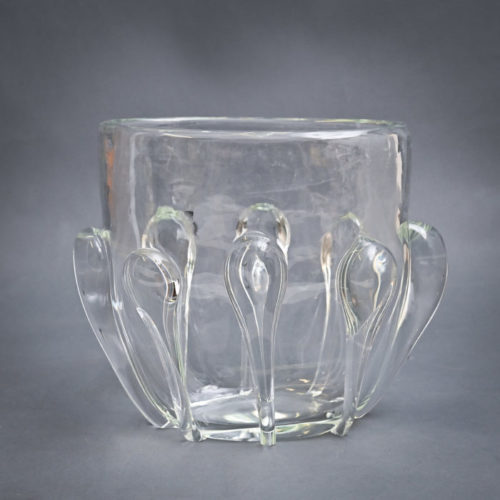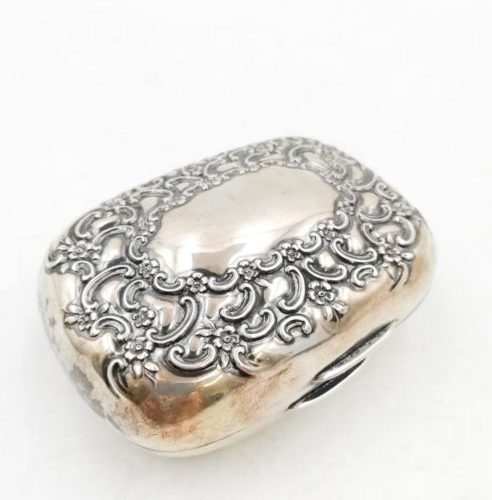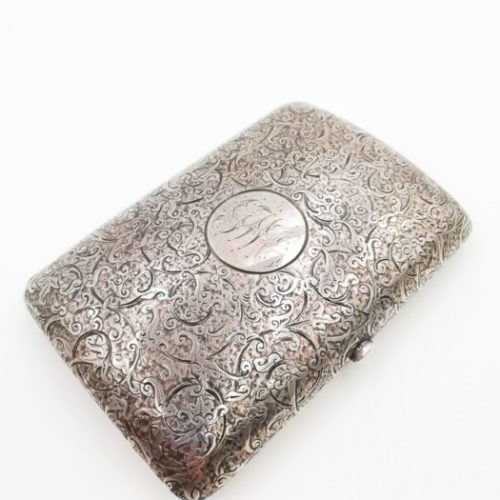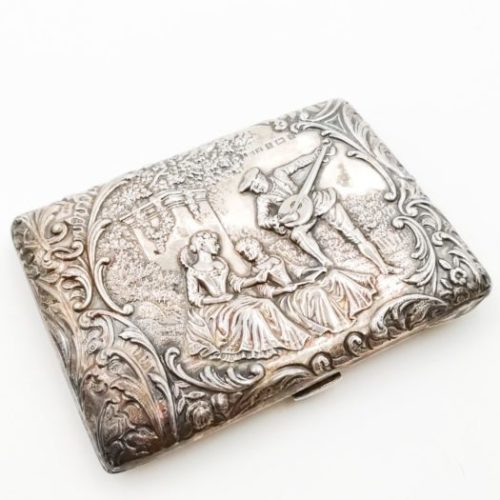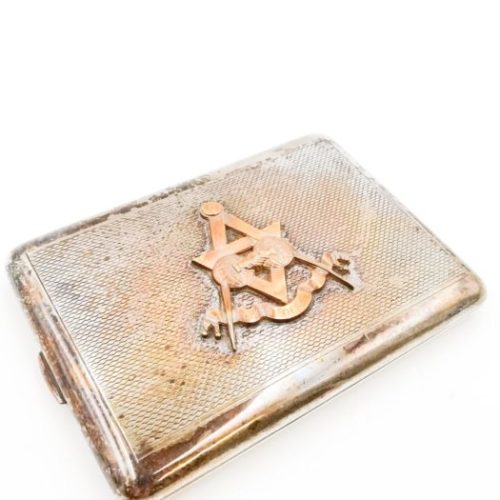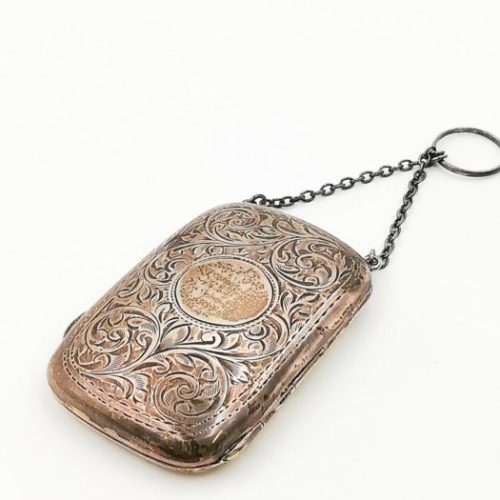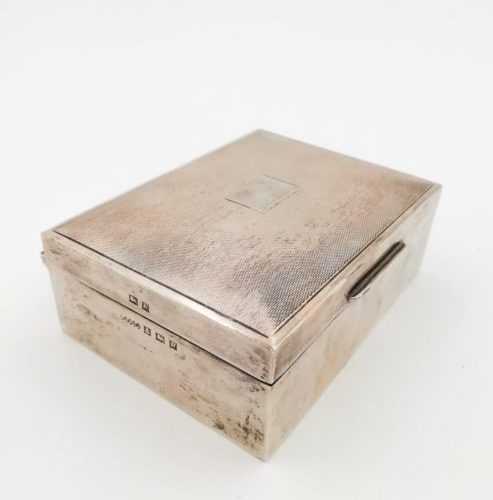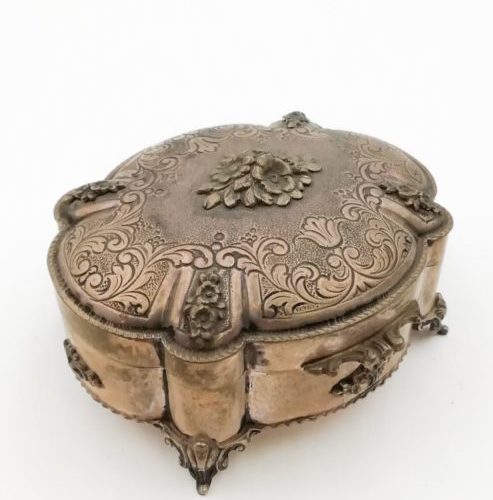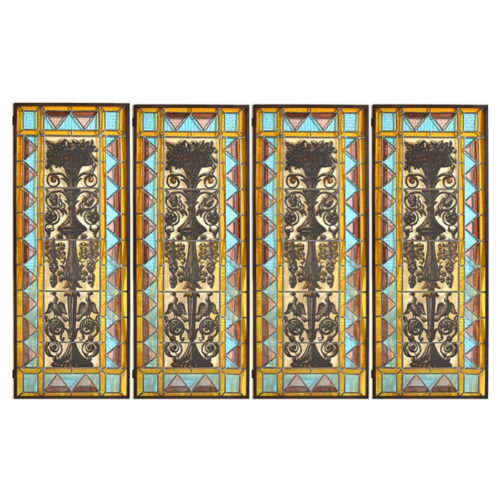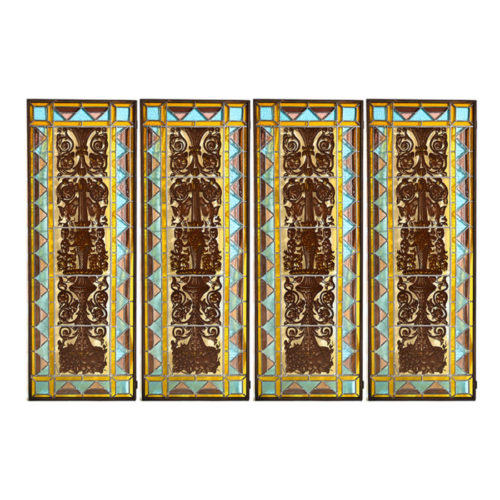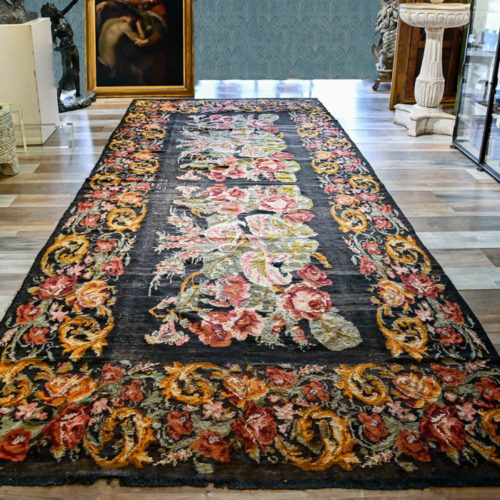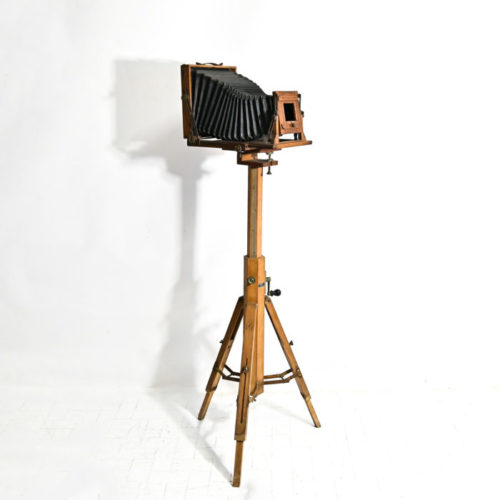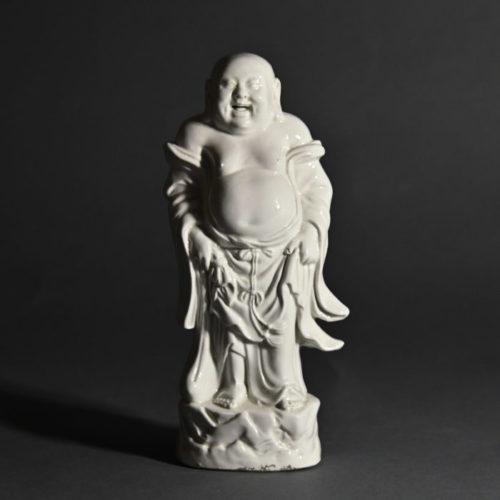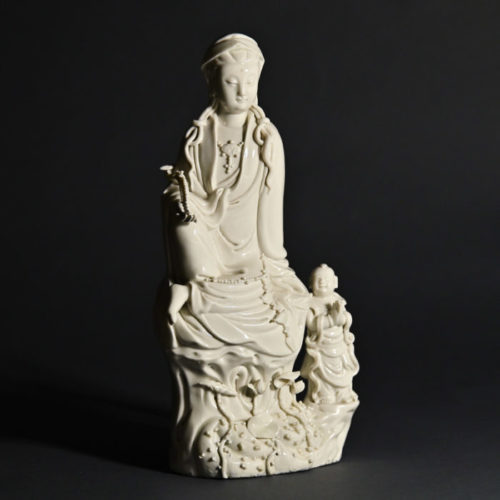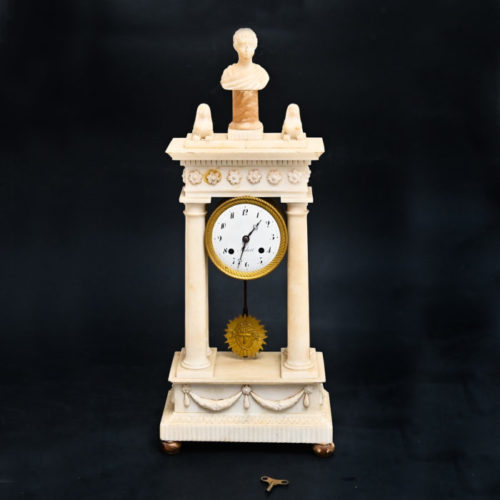-
Out of stock
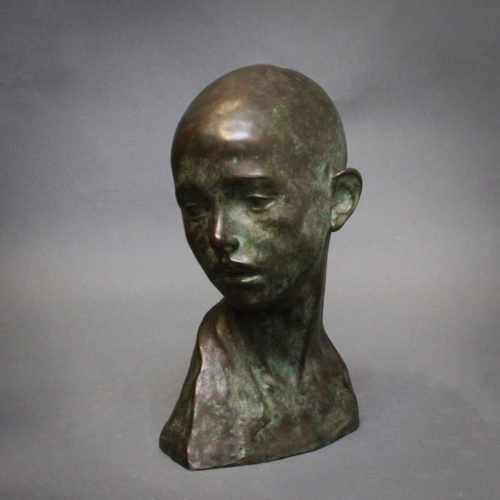 "Child", bronze by Claudio Botta, 1929, bears the signature of the famous Brescian sculptor. The sculpture is a detail of the Monument to Edmondo de Amicis - First prize at the National Competition of Oneglia (Imperia). The bronze is prensent in the Catalog "Claudio Botta, artista bresciano" at page 29, published in a special edition printed in 500 copies in 1959.
"Child", bronze by Claudio Botta, 1929, bears the signature of the famous Brescian sculptor. The sculpture is a detail of the Monument to Edmondo de Amicis - First prize at the National Competition of Oneglia (Imperia). The bronze is prensent in the Catalog "Claudio Botta, artista bresciano" at page 29, published in a special edition printed in 500 copies in 1959. -
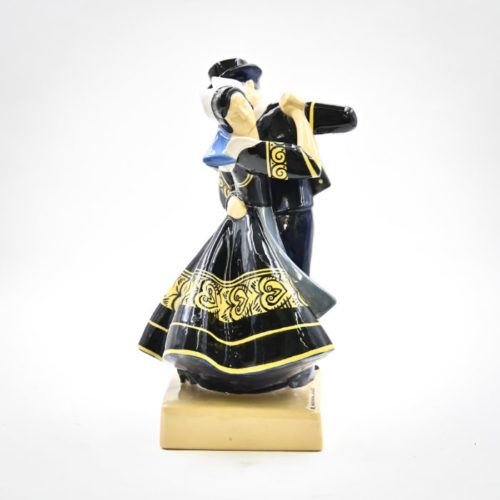 Pair of polychrome ceramic dancers by Robert Micheau-Vernez (1907-1989), created for the Henriot factory. The ceramic on the base is inscribed "Danseurs de Pont Aven", and underneath is written "145/Henriot Quimper". Robert Micheau-Vernez created this model in 1934. Period: 1930s Measurements: H 33 x W 16,5 x D 16,5 cm
Pair of polychrome ceramic dancers by Robert Micheau-Vernez (1907-1989), created for the Henriot factory. The ceramic on the base is inscribed "Danseurs de Pont Aven", and underneath is written "145/Henriot Quimper". Robert Micheau-Vernez created this model in 1934. Period: 1930s Measurements: H 33 x W 16,5 x D 16,5 cm -
Out of stock
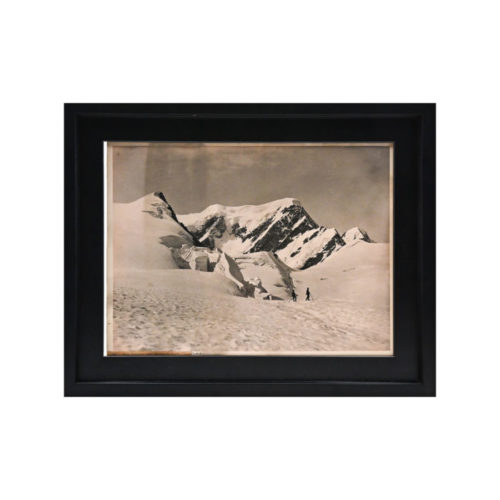 Photograph by Vittorio Sella. Mount Dongusorun 4468 m from the Kogutai Glacier Central Caucasus Gelatin silver salt print. Period: Early 20th century Measurements: H 30 x W 40 cm
Photograph by Vittorio Sella. Mount Dongusorun 4468 m from the Kogutai Glacier Central Caucasus Gelatin silver salt print. Period: Early 20th century Measurements: H 30 x W 40 cm -
Out of stock
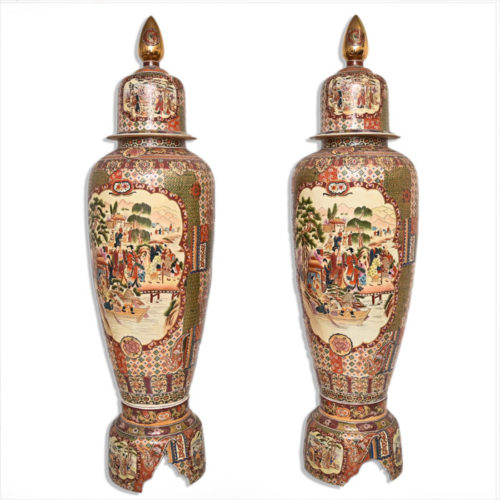 Pair of large Japanese vases, 20th century. The vases are fully decorated, and consist of base, central body and lid. Period: '900 Measurements: H 237 x D 62 cm
Pair of large Japanese vases, 20th century. The vases are fully decorated, and consist of base, central body and lid. Period: '900 Measurements: H 237 x D 62 cm -
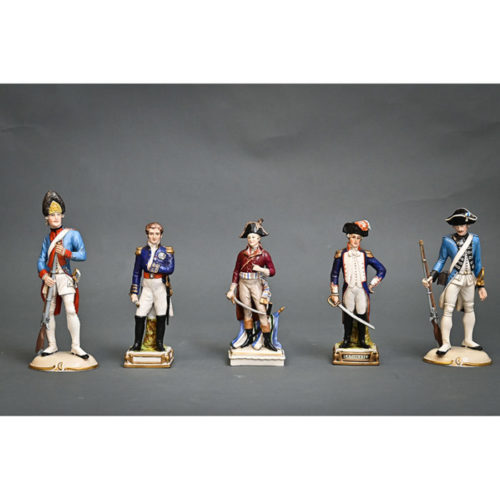 Group of early 20th century ceramic toy soldiers. Three French and two English. French: two represent: La Fayette and Gouvion Saint Cyr, the last one is a Capodimonte ceramic. English: they are from the Nymphenburg Porcelain Manufactory, located in Nymphenburg Castle in Munich, founded in 1747 by Prince-Elector Maximilian III of Bavaria. DIMENSIONS Starting from the left: English soldier: H 26 x W 10.5 x 8.5 cm Gouvion Saint Cyr: H 22 x W 7 x D 6,5 cm Soldier in Capodimonte red ceramic: H 22,5 x W 9 x D 7 cm La Fayette: H 22 x W 7 x D 6,5 cm English soldier: H 23,5 x W 10,5 x D 8,5 cm Period: early '900 Measurements: H 22/26 x W 7/10,5 x D 6,5/8,5 cm
Group of early 20th century ceramic toy soldiers. Three French and two English. French: two represent: La Fayette and Gouvion Saint Cyr, the last one is a Capodimonte ceramic. English: they are from the Nymphenburg Porcelain Manufactory, located in Nymphenburg Castle in Munich, founded in 1747 by Prince-Elector Maximilian III of Bavaria. DIMENSIONS Starting from the left: English soldier: H 26 x W 10.5 x 8.5 cm Gouvion Saint Cyr: H 22 x W 7 x D 6,5 cm Soldier in Capodimonte red ceramic: H 22,5 x W 9 x D 7 cm La Fayette: H 22 x W 7 x D 6,5 cm English soldier: H 23,5 x W 10,5 x D 8,5 cm Period: early '900 Measurements: H 22/26 x W 7/10,5 x D 6,5/8,5 cm -
Out of stock
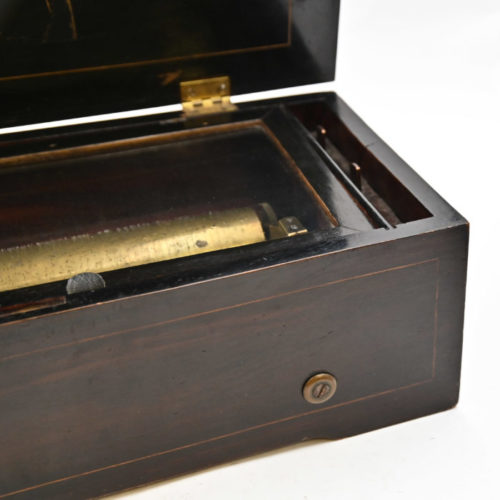 Antique Swiss Music Box. In good condition, one tooth missing in the mechanism. A product of superior Swiss mechanical workmanship, this piano-forte cylinder music box produces an amazing sound quality. Measurements: H 13.5 x 47.5 x 19.5 cm
Antique Swiss Music Box. In good condition, one tooth missing in the mechanism. A product of superior Swiss mechanical workmanship, this piano-forte cylinder music box produces an amazing sound quality. Measurements: H 13.5 x 47.5 x 19.5 cm -
Out of stock
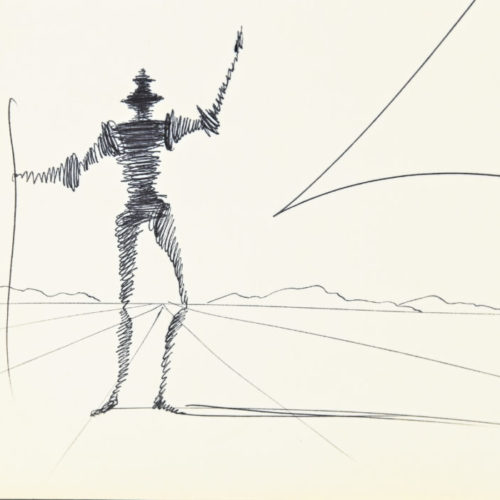 "Dali - De Draeger" catalogue by Max Gérard, 1968. The catalogue has a drawing of Don Quixote, with a dedication on the guard paper, a gift from the Catalan artist Salvador Dali (Figueras 1904 - 1989) "Every morning, as I wake up, I experience a supreme pleasure that I am discovering today for the first time: that of being Salvador Dali, and I wonder, filled with wonder, what this Salvador Dali will do again today that is so prodigious. And every day it is more difficult for me to understand how others can live without being Gala or Salvador Dali. A Catalan with a thirst for gold and glory, Dali painted a lot and talked a lot. His favourite subject: how to become a genius. His conclusion: 'Oh, Salvador, now you know, if you play at being a genius, you will become one! Salvador Dali's taste for provocation, excessive character, pursuit of paradox and exaggerated egocentricity have made him a well-known figure to the general public. These elements have helped to turn a great artist - endowed with a fervid creative intelligence and a profound knowledge of the history of the arts, the masters of the past and the literary research of his time - into a myth, which still arouses great curiosity today. However, his continuous exposure as an absolute 'genius' of art, to critics and to the judgement of the public, has given the impression of being able to fully understand his work and easily enter into his thought. In reality, his entire oeuvre reveals a very complex personality. Like his compatriot Picasso, Dali experimented with different expressive languages during his long career, moving away from painting towards cinema, theatre, photography and even performance. "At the age of six I wanted to be a cook. At seven I wanted to be Napoleon. And my ambition has been steadily growing ever since". Dali's life and work are inextricably intertwined, in fact many events in the artist's life were reflected in his creations, and many paintings can only be understood on the basis of the events that marked his life. At the age of six he painted his first canvas. Then, at the age of ten, he received his first drawing lesson, under the guidance of the famous Impressionist painter Ramón Pichot (1872 - 1925). He would later say that he was influenced by Pichot's works, which represented his first contact with a non-academic artistic current, focused on the reality of his time. At the age of fourteen he discovered the pompiers, at twenty-two cubism and at twenty-four he was already Dali, convinced that he had been called Salvador because he was destined to be the "saviour" of painting threatened with death by abstract art, academic surrealism, Dadaism in general and all the anarchic isms. At the age of 25, he was already winning over critics, doing business with gallery owners and collecting scandals. Period: 1968 Measurements: Page size with drawing and dedication H 30 x W 27.5 cm
"Dali - De Draeger" catalogue by Max Gérard, 1968. The catalogue has a drawing of Don Quixote, with a dedication on the guard paper, a gift from the Catalan artist Salvador Dali (Figueras 1904 - 1989) "Every morning, as I wake up, I experience a supreme pleasure that I am discovering today for the first time: that of being Salvador Dali, and I wonder, filled with wonder, what this Salvador Dali will do again today that is so prodigious. And every day it is more difficult for me to understand how others can live without being Gala or Salvador Dali. A Catalan with a thirst for gold and glory, Dali painted a lot and talked a lot. His favourite subject: how to become a genius. His conclusion: 'Oh, Salvador, now you know, if you play at being a genius, you will become one! Salvador Dali's taste for provocation, excessive character, pursuit of paradox and exaggerated egocentricity have made him a well-known figure to the general public. These elements have helped to turn a great artist - endowed with a fervid creative intelligence and a profound knowledge of the history of the arts, the masters of the past and the literary research of his time - into a myth, which still arouses great curiosity today. However, his continuous exposure as an absolute 'genius' of art, to critics and to the judgement of the public, has given the impression of being able to fully understand his work and easily enter into his thought. In reality, his entire oeuvre reveals a very complex personality. Like his compatriot Picasso, Dali experimented with different expressive languages during his long career, moving away from painting towards cinema, theatre, photography and even performance. "At the age of six I wanted to be a cook. At seven I wanted to be Napoleon. And my ambition has been steadily growing ever since". Dali's life and work are inextricably intertwined, in fact many events in the artist's life were reflected in his creations, and many paintings can only be understood on the basis of the events that marked his life. At the age of six he painted his first canvas. Then, at the age of ten, he received his first drawing lesson, under the guidance of the famous Impressionist painter Ramón Pichot (1872 - 1925). He would later say that he was influenced by Pichot's works, which represented his first contact with a non-academic artistic current, focused on the reality of his time. At the age of fourteen he discovered the pompiers, at twenty-two cubism and at twenty-four he was already Dali, convinced that he had been called Salvador because he was destined to be the "saviour" of painting threatened with death by abstract art, academic surrealism, Dadaism in general and all the anarchic isms. At the age of 25, he was already winning over critics, doing business with gallery owners and collecting scandals. Period: 1968 Measurements: Page size with drawing and dedication H 30 x W 27.5 cm -
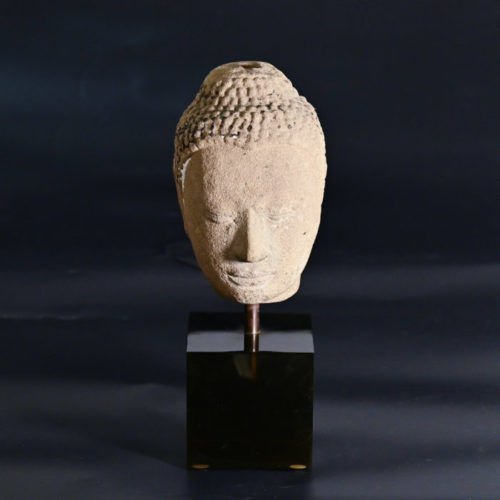 Ayutthaya Buddha head carved in sandstone, produced in Siam in about 1650. With authentication from the Department of Oriental Art, Antique Silver, (18a Northampton square, London, E.C. 1). The Buddha's head is usually depicted in a state of meditation, the faint smile on the statue symbolising his tranquil and aristocratic nature. On the top of his head he has a prominent protrusion, called "uṣṇīṣa", oval-shaped, representing the splendour of spiritual energy, but its original function was as a crown; while the short curly hair shows that Prince Siddhartha shed his noble title and privileges. Period: ca. 1650 Measurements: H 31 x W 11.5 x D 13 cm
Ayutthaya Buddha head carved in sandstone, produced in Siam in about 1650. With authentication from the Department of Oriental Art, Antique Silver, (18a Northampton square, London, E.C. 1). The Buddha's head is usually depicted in a state of meditation, the faint smile on the statue symbolising his tranquil and aristocratic nature. On the top of his head he has a prominent protrusion, called "uṣṇīṣa", oval-shaped, representing the splendour of spiritual energy, but its original function was as a crown; while the short curly hair shows that Prince Siddhartha shed his noble title and privileges. Period: ca. 1650 Measurements: H 31 x W 11.5 x D 13 cm -
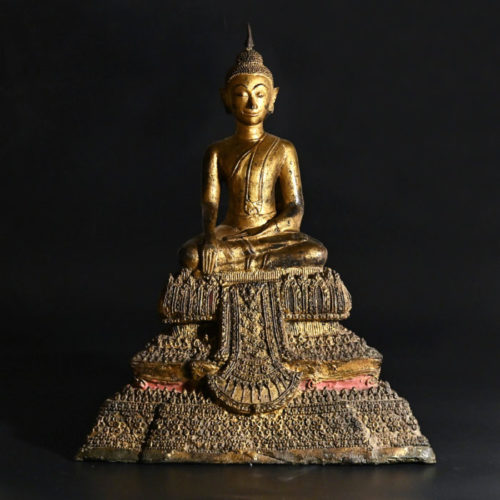 Late Ayutthaya gilt bronze Buddha, produced in Siam around 1780. With authentication from the Oriental Art Department, Antique Silver (18a Northampton square, London, E.C. 1). The kingdom of Ayutthaya was a state in Siam, present-day Thailand, which existed between 1351 and 1767. It took its name from its capital, Ayutthaya. The Buddha rests on a multi-layered base, and is represented in the "bhumisparsamudra" position, his right hand resting on his knee with the palm downwards and with the tips of the fingers touching the ground in such a way as to symbolise contact with the divinity of the earth, while the left hand is resting on his lap. With this gesture (mudrā) he demonstrated the attainment of enlightenment. On the top of his head Bhudda has a flame-shaped protuberance, called "uṣṇīṣa", which represents the radiance of spiritual energy. Period: circa 1780 Measurements: H 39.5 x W 32.5 x D 22 cm
Late Ayutthaya gilt bronze Buddha, produced in Siam around 1780. With authentication from the Oriental Art Department, Antique Silver (18a Northampton square, London, E.C. 1). The kingdom of Ayutthaya was a state in Siam, present-day Thailand, which existed between 1351 and 1767. It took its name from its capital, Ayutthaya. The Buddha rests on a multi-layered base, and is represented in the "bhumisparsamudra" position, his right hand resting on his knee with the palm downwards and with the tips of the fingers touching the ground in such a way as to symbolise contact with the divinity of the earth, while the left hand is resting on his lap. With this gesture (mudrā) he demonstrated the attainment of enlightenment. On the top of his head Bhudda has a flame-shaped protuberance, called "uṣṇīṣa", which represents the radiance of spiritual energy. Period: circa 1780 Measurements: H 39.5 x W 32.5 x D 22 cm
